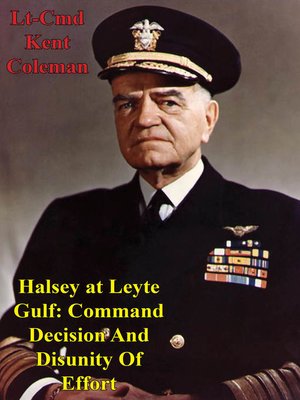
Sign up to save your library
With an OverDrive account, you can save your favorite libraries for at-a-glance information about availability. Find out more about OverDrive accounts.
Find this title in Libby, the library reading app by OverDrive.



Search for a digital library with this title
Title found at these libraries:
| Library Name | Distance |
|---|---|
| Loading... |
In October 1944, US forces executed amphibious landings on the Japanese-occupied island of Leyte in the central Philippines. Japanese naval forces, severely outnumbered by the US Third and Seventh Fleets, attempted to stop the invasion by attacking US amphibious shipping in Leyte Gulf. Due to the divided US area commands in the Pacific theater during World War II, the Third and Seventh Fleet commanders, Adm. Halsey and Vice Adm. Kinkaid, reported to separate superiors, Adm. Nimitz and Gen. MacArthur, even though both fleets were supporting the operation. Although the Japanese were soundly defeated, one of the Japanese forces, under Vice Adm. Kurita, nearly reached its objective. Many historians have criticized Halsey for ordering his carrier force to close with a Japanese carrier force that was acting as a decoy, thus leaving the US forces in Leyte Gulf unprotected. Although Halsey was effectively decoyed, the divided US naval chain of command amplified problems in communication and coordination between Halsey and Kinkaid. This divided command was more important in determining the course of the battle than the tactical decision made by Halsey and led to an American disunity of effort that nearly allowed Kurita's mission to succeed.







